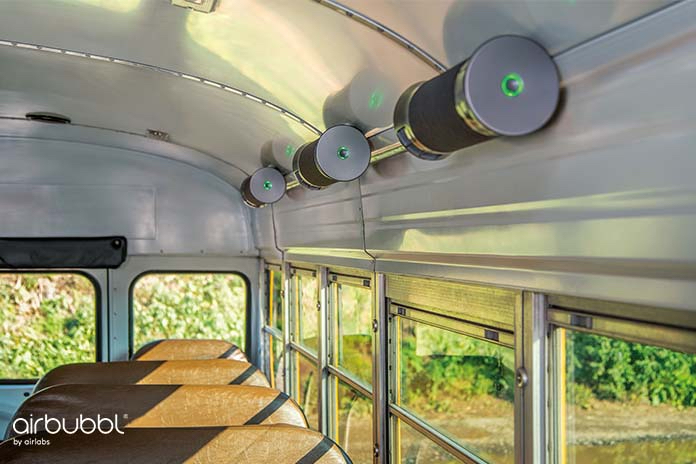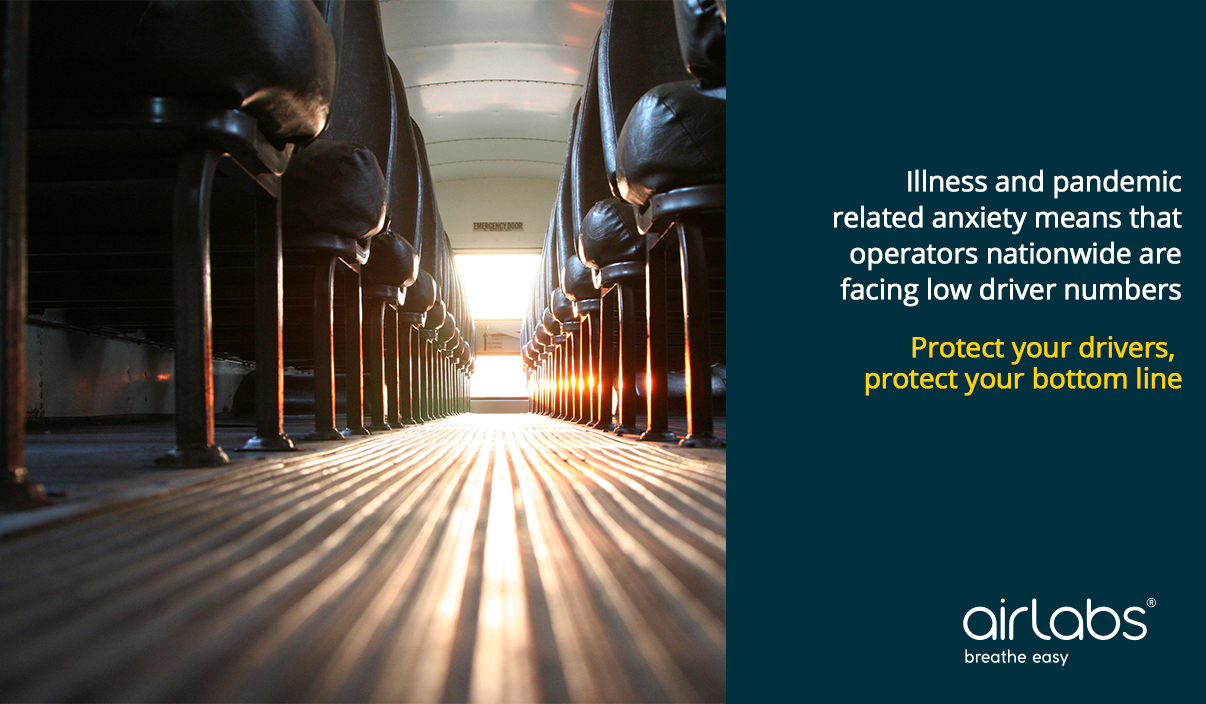Backed by science, AirLabs pride themselves in understanding what air purifiers remove from the environment they are in, as well as what they may add to it. This article looks at:
- The rushed use of Ionizers in the classroom that lead to a health risk
- Understanding the threat at hand
- The risks of unproven technology
- How to identify trusted solutions
- The urgency needed as we head into months of extreme weather conditions
Since the start of the COVID-19 pandemic, schools across the United States have spent more than $100 million on ionizer technology in an attempt to clean the air in classrooms, and to keep children safe while transporting them to and from school.
However, despite this considerable investment, there is little evidence to suggest that the air will be any cleaner as a result, or that the nation’s children will be less exposed to COVID-19. Ionizer technology remains unproven in reducing transmission of the virus in real world settings.
Additionally, this technology has even been found to emit harmful by-products, including ozone, as well as volatile organic compounds. Many health and safety agencies, including the California Air Resources Board (CARB), have taken very strong stances against ionizers, and the technology is most often deemed inefficient, and at worst a health risk.
This is a scandal on a huge scale, and it has largely gone unnoticed. While the vast majority of these manufacturers no doubt has good intentions, the companies that sell these products are misleading their customers and parents about their effectiveness and are potentially harming the children they claim to safeguard while wasting millions of dollars of school and parents’ money.
Understanding the Threat
We now know that coronavirus is spread via airborne transmission, for example when an infected person coughs, breathes, talks, or sings Wheels on the Bus. Even once they’ve left the enclosed space, the virus can remain suspended in the air for several hours. While opening windows and doors is an effective way of increasing ventilation in enclosed spaces, it is not always feasible to do this effectively, especially on busy school buses.
This is particularly important during extreme weather conditions where we tend to spend more time with windows closed and unfortunately the risks of a spike in infection grows. We must therefore take every measure available to properly protect children from coronavirus in and on their way to school.
Effective air purification can also contribute to broader safety and wellbeing in a school bus setting. For drivers, working in a clean air environment reduces workplace anxiety and improves focus at the wheel, helping to reduce accidents. Access to clean air also reduces sick days and minimizes costs and operational overheads associated with health insurance premiums and the need for replacement agency drivers.
Risks of Unproven Technology
Ionizer technology claims to neutralize particulate matter, bacteria and virus cells, odorous gases, and aerosols. Scientific investigation, however, proves that these claims lack any credibility. Health and safety agencies, including the Environmental Protection Agency (EPA) and California Air Resources Board (CARB) are amongst those who strongly recommended against the use of ionizers due their ineffectiveness in cleaning air and risks to health.
In everyday operating conditions, ions added to occupied environments such as a school bus will react with other compounds present in indoor air, which will lead to the formation of harmful by-products such as formaldehyde and ozone. Ions also rapidly bind to other gases and spur the formation of new ‘ultrafine’ particles, which are known air pollutants.
The ozone generated by bipolar ionization is hard to detect. However, this in turn has no effect on particle concentration making the technology essentially ineffective at ‘killing’ the coronavirus or any other pathogen over a large area. According to a field study by Boeing on these products, there is no effect in using bipolar technology.
The technology’s ineffectiveness and potential risks to health, as acknowledged by the top health and safety agencies in the United States, poses a real threat to the children that the technology is claiming to protect and leads to significant levels of misspending by schools across the country.
Trusted Solutions
Efficacy is only part of the story when it comes to effective air purification. The other part of the equation is the Clean Air Delivery Rate (CADR), the standard measurement of an air cleaning device’s efficiency. To know if the product you are buying is effective, it is important to know whether the products have had their CADR independently tested to a recognized test standard.
Institut de Pasteur, for example, tests the ability of air purifying devices to remove airborne pathogens through using live, human airborne coronavirus. The In-Use Technology Assessment (IUTA) also tests the effectiveness of devices when removing particulate matter and gases, such as PM2.5, PM10, nitrogen dioxide (NO2) and Ozone (O3). Ensuring devices have undergone this level of testing when purchasing air purification technologies must be at the forefront of decision-making.
AirLabs’ AirBubbl, for example, is the only air purifier independently tested and verified to remove more than 99% of airborne coronavirus and air pollution, including toxic particles and gases.
Proven to remove live human coronavirus, the compact AirBubbl devices have a world leading CADR rate, producing more than 38,000 liters of filtered air per hour, with no harmful byproducts. This market-leading CADR is capable of completely refreshing the air in an average school bus every ten minutes, protecting drivers and students from the risks of airborne viruses and pollution.
Every student, from the front to the back of the vehicle, is equally protected. Minimizing daily exposure to air pollution also improves concentration in the classroom and protects their long-term cognitive development.
See the AirBubbl in action below:
Urgent Action Required
While vaccinations and other measures will of course remain crucial, proven air purification technology has a considerable role to play in keeping children safe. There is an urgent need for schools to be able to invest in proven solutions with the confidence that they will help address the problems of air pollution and airborne coronavirus.
As we prepare for changes in weather and the threat of extreme weather conditions, schools and transport operators must urgently consider the solutions they are using to clean the air in classrooms and on board their buses to address the airborne risk of transmission.
To find out more about AirLabs, how we develop our clean air technology, and our in-vehicle air filtration solution AirBubbl please contact info@airlabs.com.

















